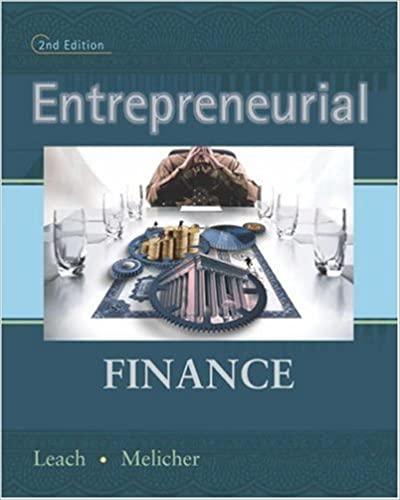Question
Hi, do you have the answers to the course International Financial Markets? This is my homework: Thanks! 1) Foreign exchange is best defined as the
Hi, do you have the answers to the course International Financial Markets? This is my homework: Thanks!
1) Foreign exchange is best defined as the risk that
A) the value of an obligation will change because of a change in foreign exchange risk.
B) the value of an asset will become trapped by an inability to exchange foreign currencies.
C) a foreign government may be overthrown freezing any assets held in that country.
D) a foreign currency market might collapse.
2) The risk that results from converting the value of foreign-denominated assets into a common currency is called
A) translation exposure.
B) transaction exposure.
C) foreign exposure.
D) economic exposure.
3) The process of offsetting risk that a multinational firm faces is known as
A) domesticating
B) uncovering.
C). hedging.
D) exposure.
4) One method of hedging that eliminates foreign exchange risk is by ensuring the future delivery of a foreign currency is called
A) a spot contract
B). a forward contract.
C) an option.
D) standing order.
5) If the dollars-per-euro spot rate is 0.7750 and the 3 month forward rate is 0.7800, what is the amount of the standard forward discount or premium?
A) 7.69%
B) 2.56%
C) 2.58%
D) 7.74%
6) If the supply of loanable funds increases, what is the result for the equilibrium of the loanable funds market?
A) ) A shortage of loanable funds would push interest rates up and decrease the equilibrium quantity of loanable funds.
B) A surplus of loanable funds would push interest rates up and decrease the equilibrium quantity of loanable funds.
C) A shortage of loanable funds would push interest rates down and increase the equilibrium quantity of loanable funds.
D) A surplus of loanable funds would push interest rates down and increase the equilibrium quantity of loanable funds.
7) What would the foreign interest rate need to be to achieve interest rate parity if the domestic interest rate is 5%, the forward rate is 1.48 and the spot rate is 1.5?
A) 6%
B) 8%
C) 7%
D) 2%
8) Suppose an individual firm is comparing two investments, a one year bond from a U.S. firm paying 4% or a one year bond from a German firm which is paying 6%. The current dollars-per-euro rate is 0.75, and the expected rate in one year is 0.72. If the expected rate is correct, which investment will receive the higher return?
A) The U.S. Bond
B) The German Bond
C) They will have the same return.
D) This cannot be determined from the information given.
9) If covered interest parity holds then
A) international interest rates should be equal
B).the difference between two countries' interest rates should roughly equal the forward discount or premium between their currencies.
C) firm should be able to identify opportunities for arbitrage in investments.
D) forward rates should equal spot rates.
10) Suppose an individual firm is comparing two investments, a one year bond from a U.S. firm paying 4% or a one year bond from a German firm which is paying 6%. The current dollars-per-euro rate is 0.75, and the expected rate in one year is 0.78. If the expected rate is correct, which investment will yields a covered interest arbitrage opportunity?
A) The U.S. Bond
B) The German Bond
C) They will have the same return
D) This cannot be determined from the information given.
11) The difference between the covered and uncovered interest parity conditions is
A) whether or not the investment return rates are guaranteed.
B) how far out the expected spot rates are given.
C) whether or not the foreign interest rate is known.
D) whether or not the future exchange value is secured with a hedge.
12) When an investment carries a higher than expect return to compensate an individual for uncertainty, this is known as a
A) risk premium.
B) uncovered interest arbitrage opportunity.
C) hedge.
D) translation exposure.
13) Risk that is associated with a government holding too much debt would be considered
A) ) part of foreign exchange risk
B. country risk.
C) translation exposure.
D) uncovered.
14) Which of the following is a carry trade strategy?
A) Borrow currency with a low interest rate, convert it into a currency with a higher interest rate and lend it out.
B) Buy currencies that have a forward discount and sell currencies at a forward premium.
C) Sell currencies that have a forward discount and buy currencies at a forward premium.
D) both A and B
15) One of the problems in determining how efficient foreign exchange markets are is that
A) traders' expectations of risk premiums may be false.
B) foreign exchange markets include only developed currencies.
C) supply of foreign currencies are determined by governments.
D) uncovered interest parity might exist.
16) What is the difference between international money markets and international capital markets?
A) the direction of financial flows in the market
B) the risk premium of the instruments in the market
C) the length of maturities for the instruments
D) the countries that participate in the markets
17) A Eurocurrency is a
A). bank account located in England.
B) bank account in the Eurozone.
C) bank account denominated in euros in the EU.
D) bank account denominated in a currency other than the nation in which the deposit is located
18) One possible source of the first Eurocurrency account was a result of the
A Oil Crisis in the 1970s.
B) Second World War.
C) Cold War.
D) the Erie Canal.
Step by Step Solution
There are 3 Steps involved in it
Step: 1

Get Instant Access to Expert-Tailored Solutions
See step-by-step solutions with expert insights and AI powered tools for academic success
Step: 2

Step: 3

Ace Your Homework with AI
Get the answers you need in no time with our AI-driven, step-by-step assistance
Get Started


